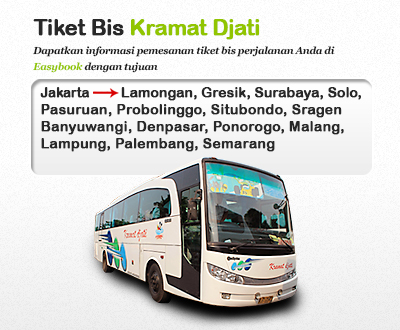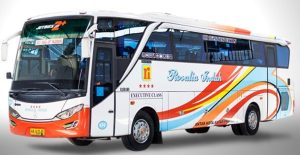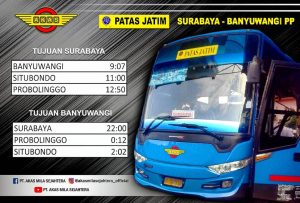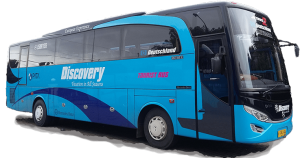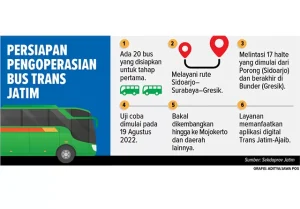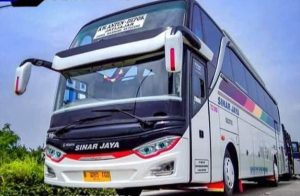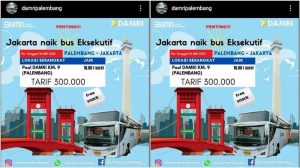Step 1: Write the First 5 Sections (Approx. 1200 words)
Introduction
Rute Bus Kramat Djati is one of the most popular bus routes in Jakarta, providing essential public transportation services to thousands of commuters every day. For the people of Jakarta, public transportation plays a crucial role in daily life, and the Kramat Djati bus route stands out as a favorite among residents. Whether you’re commuting to work, school, or simply navigating the city, this bus offers a convenient and affordable travel option. But what makes Rute Bus Kramat Djati so special? In this article, we’ll explore its features, popular stops, commuter experiences, and why it is considered one of the best routes in Jakarta.
What is Rute Bus Kramat Djati?
Rute Bus Kramat Djati is an important public bus route in Jakarta that serves a vital role in connecting key districts of the city. Starting from Kramat Djati Terminal, the route travels through several neighborhoods, offering a convenient way for people to get from point A to point B without the need for a car or motorcycle.
This bus route primarily operates in East Jakarta, covering neighborhoods that might otherwise be difficult to reach with other modes of transportation. Whether you’re traveling from Kramat Djati to other districts in East Jakarta, or heading to the heart of the city, Rute Bus Kramat Djati provides a reliable option for getting around.
The bus operates throughout the day, with frequent services ensuring that commuters don’t have to wait long. The frequency of buses is one of the key factors behind its popularity, making it a preferred choice for daily commuters. Plus, the bus runs during peak hours, which means it can accommodate those who need to travel during rush hours.
Why is Rute Bus Kramat Djati So Popular?
Several reasons explain why Rute Bus Kramat Djati has earned a reputation as one of the favorite bus routes in Jakarta.
-
Convenience: The bus route serves as a backbone for many commuters in East Jakarta, especially for those who don’t have access to private vehicles. It connects various important neighborhoods, offices, schools, and even shopping areas. The route makes it easy to get to places that might otherwise require switching from one mode of transport to another.
-
Affordable Pricing: One of the standout features of Rute Bus Kramat Djati is its affordability. With Jakarta’s traffic often being unpredictable, many people prefer buses over taxis or private vehicles as a cost-effective option. The fare structure is simple and reasonable, making it accessible for people from various income brackets.
-
Reliability and Frequency: Another key factor is the regularity of the buses. Passengers don’t have to worry about waiting long for the next bus. With buses arriving at short intervals, especially during rush hours, commuters can rest easy knowing they will not be left stranded. The frequency of buses also means that overcrowding can be reduced, as more people are able to catch a bus at different times.
-
Wide Coverage Area: Rute Bus Kramat Djati reaches several key locations that are essential to Jakarta’s daily life. It is not just a bus that serves residential areas, but it also connects to key business centers, hospitals, schools, and shopping malls. This wide coverage makes it a versatile route for a variety of travelers.
-
Simplicity and Accessibility: Whether you’re new to Jakarta or a local resident, Rute Bus Kramat Djati is easy to navigate. The bus route is well-marked, and most commuters are familiar with the major stops, making it a no-fuss option for getting around.
Key Stops and Major Landmarks Along Rute Bus Kramat Djati
Rute Bus Kramat Djati doesn’t just take you from one place to another—it connects you to some of Jakarta’s most important areas. The key stops along this route make it not only functional but also convenient for people traveling to well-known landmarks.
-
Kramat Djati Terminal: As the starting point of the bus route, the Kramat Djati Terminal is a bustling transport hub. It is a major terminal for buses traveling through East Jakarta, so it serves as a crucial node for people connecting to other transportation systems in the city.
-
Cawang: Another notable stop is Cawang, which is a busy district in East Jakarta that connects to other major transportation networks like the Jakarta LRT. It’s an essential stop for those commuting from different parts of the city.
-
Jalan Raya Bogor: Known for its busy traffic, Jalan Raya Bogor is a road that links many neighborhoods in East Jakarta to other areas of the city. The bus stop here serves many who need to travel across this busy road. It’s a vital artery for local commuters.
-
Other Notable Landmarks: As the bus continues along its route, it passes through residential areas, commercial centers, and educational institutions, making it a highly practical option for a variety of commuters.
Rute Bus Kramat Djati is ideal for those looking to visit both common and lesser-known spots in East Jakarta. Whether you need to head to a hospital, university, or local market, this route is strategically positioned to serve your needs.
Types of Buses Operating on Rute Kramat Djati
When it comes to the buses themselves, Rute Bus Kramat Djati features a fleet designed to accommodate the needs of Jakarta’s bustling population. Unlike the older, often crowded buses, the buses on this route are generally modern and comfortable.
-
Bus Fleet: Rute Bus Kramat Djati uses large buses with a decent capacity to fit a wide number of passengers. Depending on the time of day, some buses are double-deckers, giving more space for passengers, especially during peak hours.
-
Amenities: While the buses aren’t luxurious, they are equipped with air conditioning to keep commuters comfortable during Jakarta’s hot days. The seats are generally comfortable for short commutes, though you may need to stand during rush hours.
-
Comparing Bus Types: Unlike other routes where small minivans or microbuses are used, Rute Bus Kramat Djati uses larger buses. This allows for a greater capacity and ensures that buses do not become overcrowded too quickly. These buses are also newer, which means fewer breakdowns and delays.
Tips for Commuters Using Rute Bus Kramat Djati
Riding on Rute Bus Kramat Djati can be a pleasant experience with the right preparation. Here are a few tips to make your journey smoother:
-
Best Times to Travel: Like any public transport in Jakarta, traffic can be unpredictable. To avoid the worst of the crowds, try to travel either early in the morning before rush hour or later in the evening after the peak hours have passed.
-
How to Buy Tickets: Tickets for Rute Bus Kramat Djati are generally available at bus stops or through an online payment system. Jakarta’s bus services have also adopted contactless payment methods, making it easy for commuters to pay using e-money or QR codes.
-
Mobile Apps: Jakarta now has a number of mobile apps dedicated to public transportation, such as “Jakarta Kini” and “Transjakarta.” These apps provide real-time tracking for buses, making it easier for commuters to know when the next bus will arrive.
-
Safety Tips: Always remain vigilant when traveling on public buses, especially in busy areas. Keep your belongings secure, and avoid traveling at night if you’re unfamiliar with the area.
Step 2: Continue with Sections 6–10 (Approx. 1200 words)
Route Expansion and Future Developments
Rute Bus Kramat Djati, like many public transport services in Jakarta, has not remained static. It has continually evolved to meet the demands of the city’s growing population and to adapt to changes in urban infrastructure. One of the most exciting aspects of this route is its ongoing expansion and the plans in place to further improve its accessibility and efficiency.
Current Developments
In recent years, there has been significant investment in public transportation in Jakarta, and Rute Bus Kramat Djati has not been left behind. The introduction of newer, more energy-efficient buses with modern amenities has been a notable upgrade. These buses offer increased comfort, air-conditioning, and a smoother ride for passengers. Additionally, improvements in bus terminals and stops have been made to enhance the commuter experience. For example, new bus shelters, better lighting, and even Wi-Fi hotspots at major terminals are all part of the upgrades.
Potential Expansion of Services
Looking to the future, Rute Bus Kramat Djati is poised for further expansion. As Jakarta continues to develop and more residential and commercial areas spring up in the outskirts of the city, there is an increasing need to extend the routes of key bus services. Rute Bus Kramat Djati is expected to expand its reach to newer neighborhoods, offering more direct connections to suburban areas that are becoming more populated. The government is also looking at adding more express routes to shorten the travel time for commuters in the coming years.
What Commuters Can Expect in the Future
In addition to route expansions, future developments may also include improved technology integration, such as real-time bus tracking, better mobile app functionalities, and even more sustainable practices such as electric or hybrid buses. These efforts will not only improve the travel experience but also contribute to making public transport in Jakarta more eco-friendly and future-ready.
Comparing Rute Bus Kramat Djati with Other Bus Routes in Jakarta
While Rute Bus Kramat Djati has established itself as one of Jakarta’s favorite bus routes, it’s important to understand how it compares to other bus services in the city. Jakarta is home to a vast public transportation network, and each bus route has its own advantages and disadvantages depending on factors like location, frequency, and cost. Here’s how Rute Bus Kramat Djati stacks up against other popular routes in the city:
Comparison with Other Routes
Many of Jakarta’s bus routes follow similar patterns, with buses that travel from outer districts to more central areas. However, Rute Bus Kramat Djati stands out for its frequency and comprehensive service coverage in East Jakarta. While other routes might only connect a few key points, this bus route offers a more direct connection to a larger number of residential areas, making it incredibly convenient for daily commuters.
Furthermore, the route’s ability to integrate with other public transport systems, such as the LRT and TransJakarta, gives it a competitive edge. This level of connectivity is what makes it the preferred option for people who rely on public transportation to navigate Jakarta.
Pros and Cons
-
Pros:
- Frequent Services: One of the major advantages of Rute Bus Kramat Djati is its frequency. With buses running regularly, passengers can expect shorter waiting times, especially during peak hours.
- Affordable: The fare for Rute Bus Kramat Djati is generally cheaper than other modes of transportation like taxis or online ride-hailing services.
- Wide Coverage: The route connects several key districts and landmarks, making it highly convenient for commuters in East Jakarta.
-
Cons:
- Traffic Congestion: Despite the buses running frequently, heavy traffic during rush hour can cause delays. Buses may get stuck in traffic, reducing the overall efficiency of the route.
- Crowding During Peak Hours: The popularity of the route can lead to overcrowding, especially during the morning and evening rush hours. This is an issue for many public bus routes in Jakarta.
- Limited Route Extensions: While the route covers a wide area, there are still some neighborhoods on the outskirts of East Jakarta that lack direct access to the Kramat Djati route.
Overall, Rute Bus Kramat Djati offers an excellent balance of affordability, frequency, and coverage, making it a strong contender compared to other routes in Jakarta’s sprawling transportation network.
Rute Bus Kramat Djati and Environmental Impact
As cities around the world grapple with the environmental challenges of transportation, Jakarta has taken steps to make its public transport systems more sustainable. Rute Bus Kramat Djati plays a significant role in reducing the city’s overall carbon footprint by providing an alternative to private cars, which are among the biggest contributors to pollution.
Reducing Congestion and Emissions
By providing an efficient and affordable public transport option, Rute Bus Kramat Djati helps reduce the number of cars on the road, particularly in congested urban areas. This reduction in the number of private vehicles on the road not only helps alleviate traffic jams but also cuts down on carbon emissions. In a city like Jakarta, where air pollution is a major issue, the role of public buses in curbing emissions cannot be overstated.
Eco-friendly Initiatives
There are also plans to make the bus fleet more environmentally friendly. The city has begun experimenting with electric buses, which produce zero emissions and are quieter than traditional diesel-powered buses. If these electric buses are introduced to the Rute Bus Kramat Djati fleet, it could greatly enhance the route’s environmental sustainability.
Moreover, initiatives such as promoting carpooling, integrating bike-sharing programs, and encouraging the use of public transport over private vehicles are all steps Jakarta is taking to further reduce its environmental impact.
Sustainability and Future Growth
Rute Bus Kramat Djati will likely play a key role in the city’s green initiatives, especially as Jakarta’s population continues to grow. With future plans for expanding bus routes, improving facilities, and introducing green technologies, this bus route is on track to contribute even more to the city’s overall sustainability efforts.
Experiences from Commuters
What makes Rute Bus Kramat Djati a favorite among commuters is not just its practicality, but the real-world experience it offers to its passengers. Let’s take a look at some testimonials from daily riders to understand why this bus route is so beloved.
Testimonials from Regular Passengers
Many commuters appreciate the regularity and reliability of Rute Bus Kramat Djati. “I use the bus every day to get to work, and I can always count on it to arrive on time,” says Tuti, a daily commuter. “Even during rush hour, the buses come frequently enough that I don’t mind waiting.”
On the other hand, some passengers have mentioned that while the buses are generally comfortable, the overcrowding during peak hours can be an issue. “Sometimes it’s a bit uncomfortable during the morning rush, but the fare is so affordable that I don’t mind,” says Andi, another regular.
For others, the bus route has made their daily commute much easier. “I used to rely on a motorcycle taxi, but since Rute Bus Kramat Djati is so affordable and connects to where I need to go, I no longer have to worry about the costs,” shares Lisa, a student who frequently uses the route.
Step 3: Continue with Sections 11–15 (Approx. 1200 words)
Why People Prefer Rute Bus Kramat Djati
There are several key factors that make Rute Bus Kramat Djati stand out as a preferred mode of transportation for Jakarta’s residents. It’s not just about getting from point A to point B—it’s about the whole experience and the practical benefits it offers daily commuters.
Affordability and Comfort
Affordability is one of the primary reasons why Rute Bus Kramat Djati is so popular. With rising transportation costs in Jakarta, many commuters are looking for cheaper alternatives to taxis, ride-hailing services, or even private cars. The price of a ticket on this bus route is significantly lower than a taxi ride or using a motorcycle taxi, which makes it an attractive option for both students and working professionals. For those on a budget, the bus route’s flat fare system is an added convenience, eliminating confusion over price calculations.
Beyond the low cost, the comfort factor also plays a role in the bus’s appeal. While the buses are not luxurious, they provide a decent level of comfort for most passengers. The air-conditioned buses help ease the discomfort of Jakarta’s sweltering heat, and there’s enough space for people to sit or stand without feeling cramped. For those who rely on public transportation for long commutes, the combination of affordability and comfort is a winning formula.
Time Efficiency
The bus route is also valued for its time efficiency. Jakarta is infamous for its traffic jams, and even small delays can affect people’s productivity. Rute Bus Kramat Djati offers a relatively direct route compared to other forms of transportation, which often involve transfers and longer travel times. Passengers can rely on its frequent service, ensuring that they don’t waste too much time waiting for a bus. For people who need to get to work or appointments on time, this time efficiency is crucial.
Connection to Other Public Transportation
Rute Bus Kramat Djati’s ability to connect seamlessly with other public transportation systems in Jakarta is another factor that enhances its popularity. For example, commuters can easily transfer from the bus to the LRT or other TransJakarta services at key interchange points, making it convenient for people who need to switch lines. This kind of connectivity makes Rute Bus Kramat Djati an essential part of the city’s integrated public transportation network.
Challenges Faced by Rute Bus Kramat Djati Commuters
While Rute Bus Kramat Djati is widely regarded as an efficient and reliable service, it is not without its challenges. Like any public transportation system, it has its drawbacks that affect commuters in different ways.
Traffic Jams and Delays
The most significant challenge faced by passengers is the heavy traffic congestion that plagues Jakarta’s roads. Although the buses are frequent, they are still affected by the city’s notorious traffic jams. Buses can sometimes be delayed during rush hours, which can be frustrating for commuters who rely on punctuality to meet deadlines, appointments, or classes. Despite efforts to keep the service punctual, the road conditions in Jakarta make it difficult for buses to maintain a consistent schedule.
Overcrowding During Peak Hours
Another common issue is overcrowding. Like many popular bus routes in Jakarta, Rute Bus Kramat Djati can get packed, particularly during the morning and evening rush hours. With more people using public transport to avoid the cost and inconvenience of private cars, buses can sometimes be uncomfortable due to overcrowding. Standing for long periods or being crammed in with other passengers can make the commute less pleasant, especially for people with limited personal space.
Limited Route Extensions
Although Rute Bus Kramat Djati covers a wide range of areas, there are still some neighborhoods on the outskirts of East Jakarta that remain without direct access to the route. Commuters from these areas often need to take multiple buses or other modes of transport, which can lead to longer travel times. Some passengers have called for the expansion of the bus route to these underserved areas, which would make it even more convenient for people living in remote neighborhoods.
Conclusion
Rute Bus Kramat Djati is a vital public transport route that plays a central role in Jakarta’s daily transportation landscape. Its popularity can be attributed to its affordability, reliability, and comprehensive service coverage. Whether you’re a student, office worker, or anyone in between, this bus route provides an essential connection between East Jakarta’s neighborhoods and key areas of the city.
Despite some challenges like traffic congestion and overcrowding during peak hours, the overall benefits of using Rute Bus Kramat Djati far outweigh these drawbacks. As the city continues to grow, the future developments for this bus route will make it even more efficient and accessible, helping improve the daily commute for thousands of Jakarta’s residents.
With continued investment in both infrastructure and service improvements, Rute Bus Kramat Djati will likely remain a top choice for Jakarta commuters in the years to come. Whether you’re traveling for work, school, or leisure, this bus route is a reliable and affordable option for getting around the city.
FAQs
-
What are the operating hours of Rute Bus Kramat Djati?
Rute Bus Kramat Djati operates daily from early morning until late evening. The exact times vary depending on the specific stops, but buses typically begin running at around 5:00 AM and continue until 10:00 PM. -
How much does it cost to travel on Rute Bus Kramat Djati?
The fare for Rute Bus Kramat Djati is affordable, with a flat-rate ticket that is typically priced between IDR 3,000–5,000, depending on the distance. The fare system is simple, and payments can be made using e-money cards or cash. -
Is Rute Bus Kramat Djati available on weekends?
Yes, Rute Bus Kramat Djati operates on weekends as well. The frequency and schedule are similar to those during weekdays, though the buses may be less crowded on weekends. -
Can I track Rute Bus Kramat Djati using a mobile app?
Yes, you can track the bus in real time using apps like “Jakarta Kini” or the official Transjakarta app. These apps show the exact location of buses and provide updates on expected arrival times. -
What should I do if the bus is overcrowded?
If the bus is overcrowded, it’s best to wait for the next one, especially during peak hours. Alternatively, you can use a different mode of transport, like a nearby TransJakarta route or a ride-hailing service if you are in a hurry.

